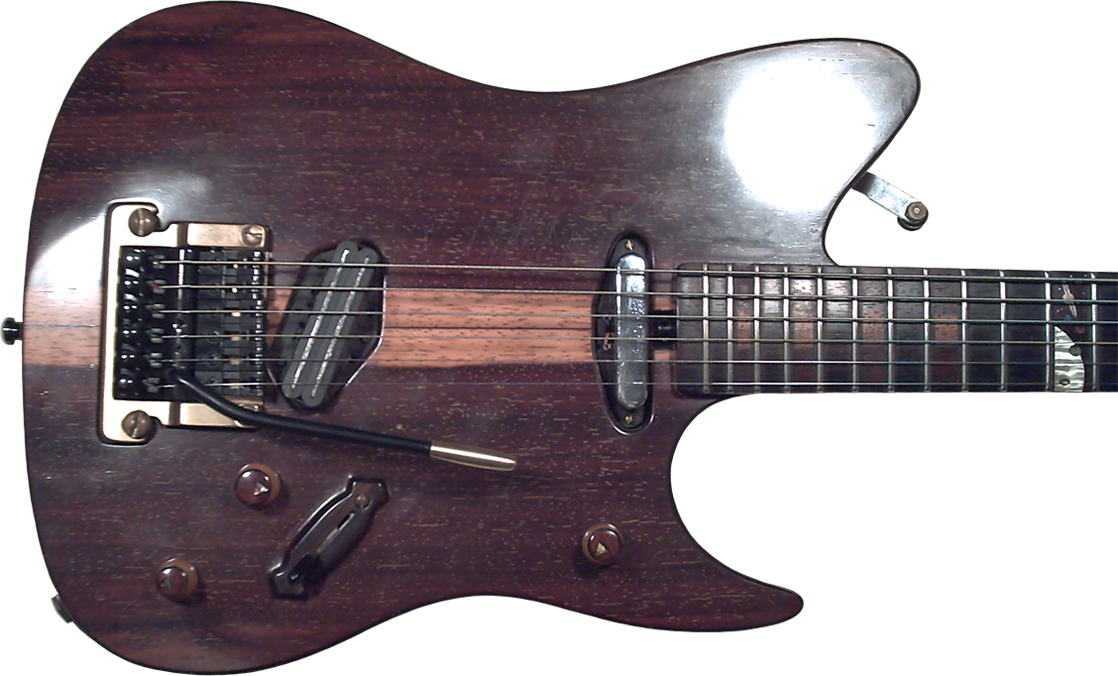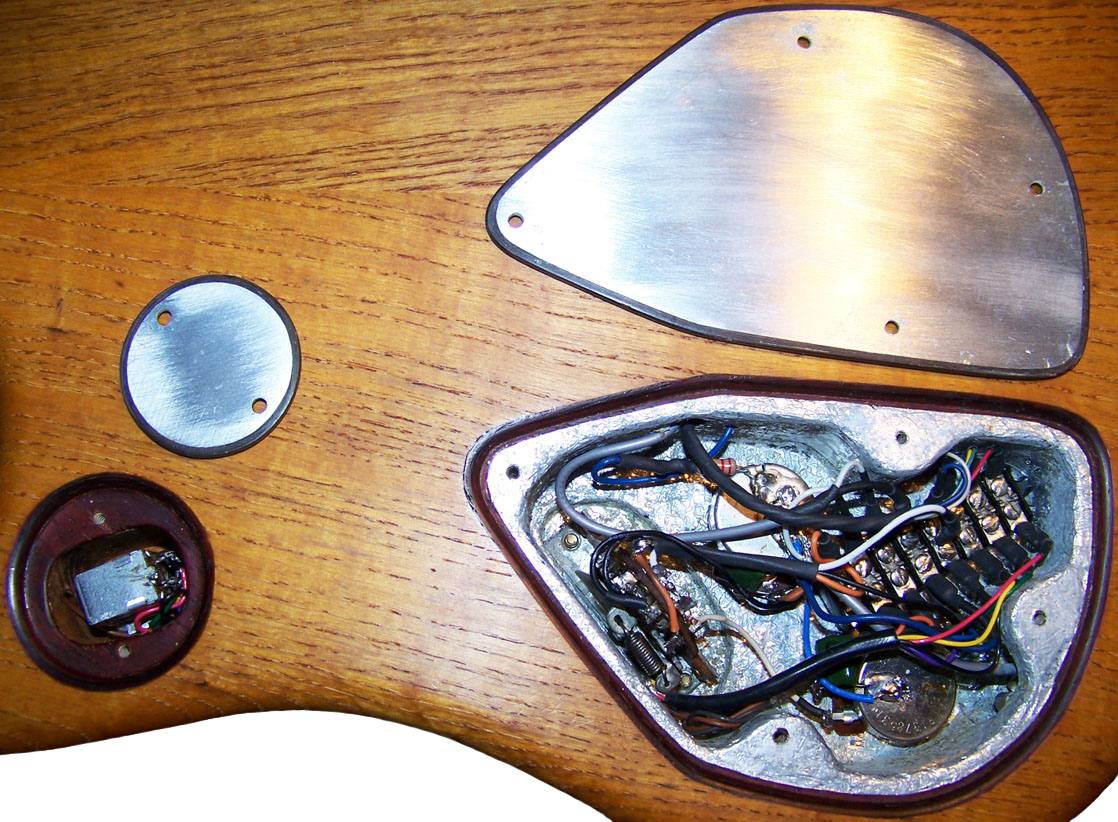 Choices, choices and more choices:
Choices, choices and more choices:
Did I say it can get daunting? Well I also said that no one can tell you exactly what you would like, as your ears are yours alone. I can only help, in choosing a scheme with you, but with everything here you have plenty to think about and work with. So just pick up your guitar, and play it, screw with the controls, and ask yourself what would you change? What do you like about it, and what annoys you about it? Could you handle more controls, or are there to many to work with?
Here is an example to give you just one idea of a circuit that is purposely built based on the needs of it's player (Mine):

This is the first guitar I built over 25 years ago, and still play. As you can see it has two pickups, both are Seymour Duncan's, a "Hot Rail" humbucker in the bridge position and an "Alnico II Pro" single coil in the neck position. The Hot rail has a high output when wired in series, but in parallel its output is almost equal to the Alnico II, which has a low output. there is a simple three way switch, a tone knob for each pickup, and one volume knob, with a push-pull switch (I will get to it later).
With only three coils I can get a wide range of sound, from "warm and mellow" to "in your face", and here is why. To start with there is only one volume control, because trying to balance volume between two knobs is difficult while playing, and besides I can control the volume via coil selection. By using a linear potentiometer instead of an audio taper (logarithmic) one, I don't get that annoying sudden drop in volume most Gibson's are hexed with, but a smooth transition all the way down. The volume does not drop to far down before it is actually turned all the way down because it is a 250k ohm pot, so setting it more precisely is a breeze. It is also in a place where I can see and operate it better with my hand on the whammy bar.
The three way switch is used to switch from the Hot Rail by itself, to both pickups parallel to each other and the Alnico II by itself, just like you would expect. Lets start with it in the 3rd position: a warm and mellow tone that is great for rhythm playing, that has a very dynamic tonal range because the Alnico II is a single coil. It is not as noisy as other single coils because of the massive shielding. With the various playing techniques (dynamics) I use and its 250 K Ohm tone control, I can get a good range with it alone.
With the 3-way in the center position, I have both pickups on, parallel to each other and the two coils of the Hot Rail are parallel to each other, which makes it three coils in parallel. This results in a slight increase in volume, with a bit more mid range, but still on the warm side.
With the 3-way in the 1st position, the Hot Rail is alone, the volume does not change much, and I get a typical clean mid rangy humbucker sound that is still good for rhythm playing. With its 500K Ohm tone knob I can warm it up.
And BAM! I pull the switch on the volume knob out, and switch the Hot Rail's coils from parallel to series, the volume and punch increase significantly, and that is how most leads should be played, no holding back, and in your face! But wait there's more! I can still throw the three way up a notch, and add the neck pickup and go into a more smooth lead sound, and have two ways to drop out of a lead, by pushing the series parallel switch back down, or throwing the three way into position 3.
With the 3-way in the neck position I can operate the push pull (when no one is looking) without a sound or change. I could have achieved almost the same thing with one of those 5-way mega switches, but having a "Lead switch" on the volume control works out better for me, because when going between rhythm and lied playing, is where controlling volume is most important, and I can pull it and turn it in one motion.
All in all I have 5 coil combinations, lots of tone control and a simple but wide range of volume control, but it is better viewed as three rhythm and two lead positions, with much control in between.
 Odds and ends:
Odds and ends:
There are some do's and don'ts that apply to wiring audio equipment, which goes ignored even by guitar manufacturers in many cases, I observe the seemingly unimportant details to ensure the best sound and lowest noise possible, and offer some additions like shielding, radio frequency (RF) suppression and even a safety shunt that will blow out before you get fried in case line voltage (110V AC) should surge through your amp to the guitar or come through the ground of a microphone.
Since potentiometers can come loose, and spin around threatening to break wires, I have a few ways to make them stay put instead of spinning freely until they are tightened back up.
And if You just can not decide on a specific circuit plan, there is always the solder-less connection block, that lets you rewire at will:
